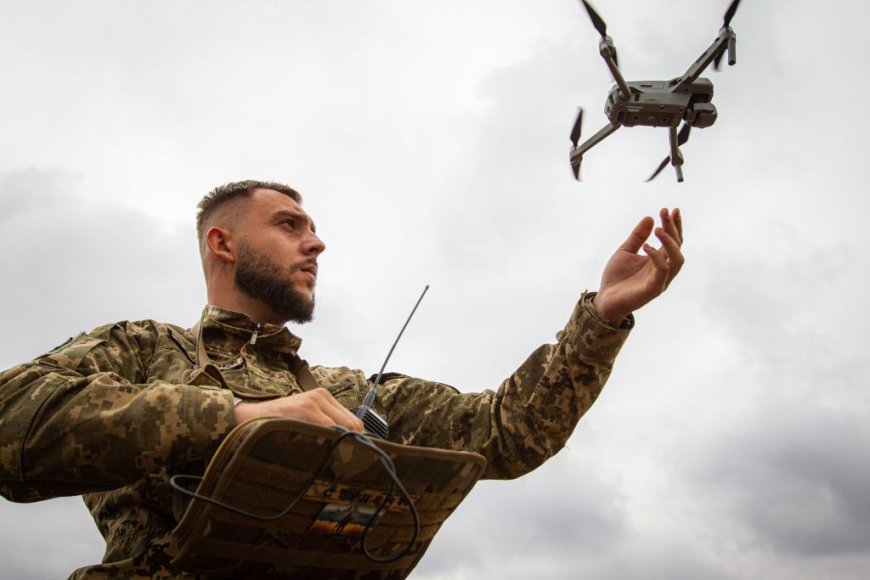Emerging Trends in Defense Technology Solutions: Shaping the Future of National Security
Emerging Trends in Defense Technology Solutions: Shaping the Future of National Security

In an era marked by rapid technological advancements and evolving security challenges, the defense industry is at the forefront of innovation. Governments worldwide are investing heavily in cutting-edge solutions to enhance their military capabilities, protect their citizens, and maintain strategic advantages. From artificial intelligence (AI) and autonomous systems to cybersecurity and hypersonic missiles, the landscape of defense technology is transforming at an unprecedented pace. This article explores some of the most trending defense tech solutions that are set to redefine the future of national security.
1. Artificial Intelligence and Machine Learning in Defense
AI has emerged as a game-changer in modern defense systems. Its ability to analyze vast data sets rapidly and identify patterns offers significant strategic advantages. Military applications include intelligence, surveillance, and reconnaissance (ISR), decision-making support, and autonomous combat systems.
AI-powered drones and surveillance platforms can monitor large areas in real-time, providing vital intelligence without risking human lives. For example, AI algorithms enhance image recognition, enabling defense forces to quickly identify threats or targets from aerial or ground-based sensors. Moreover, predictive analytics assist in maintenance and logistics, ensuring systems are operational when needed.
The use of AI is not limited to terrestrial applications; it extends to naval and air force operations. Autonomous submarines, unmanned aerial vehicles (UAVs), and UAV swarms exemplify the push toward robotic systems capable of executing complex missions with minimal human intervention.
2. Autonomous and Unmanned Systems
Autonomous systems, including ground vehicles, drones, and ships, are rapidly becoming integral to modern militaries. These systems offer advantages such as increased safety, operational efficiency, and the ability to operate in hazardous environments.
One notable development is the deployment of swarms of small drones capable of coordinated actions, such as reconnaissance, electronic warfare, or even offensive operations. These swarms utilize collective AI algorithms to adapt dynamically to changing conditions, overwhelming adversaries' defenses.
In naval domains, autonomous ships equipped with advanced sensors and weaponry are being tested for roles like logistical support, surveillance, and mine countermeasures. Meanwhile, ground autonomous vehicles assist in reconnaissance and supply delivery in contested regions.
The integration of autonomy with existing platforms is reshaping battlefield tactics, emphasizing the need for new doctrines and ethical considerations regarding the use of autonomous lethal systems.
3. Hypersonic Weapons and Missiles
Hypersonic technology remains at the forefront of defense innovation due to its potential to bypass traditional missile defenses. Hypersonic weapons travel at speeds exceeding Mach 5 (over 3,800 mph) and possess maneuverability features that make them difficult to detect and intercept.
Several countries, including the United States, China, and Russia, are investing heavily in hypersonic missile development. These weapons are designed for rapid strike capabilities against high-value targets, including airbases, naval assets, and command centers.
The advantages of hypersonic missiles include their speed, precision, and ability to evade current missile defense systems. As these weapons become operational, they will significantly impact strategic stability and deterrence calculations worldwide.
4. Cybersecurity and Electronic Warfare
As defense systems become increasingly digitized and networked, cybersecurity threats pose an ever-growing challenge. State-sponsored cyberattacks aim to disrupt, steal, or manipulate critical military infrastructure.
To counter these threats, militaries are deploying advanced cybersecurity tools that utilize AI for threat detection and response. Cyber defense units are developing resilient networks with multi-layered protection, ensuring continuity in operations.
Electronic warfare (EW) is another critical area, involving the use of electromagnetic spectrum manipulation to disrupt or deceive adversary sensors and communication channels. Modern EW systems can jam, spoof, or seize control of enemy communication and sensor systems, providing a vital advantage in modern conflict scenarios.
5. Directed Energy Weapons
Directed energy weapons (DEWs), including high-energy lasers and microwave systems, are gaining traction due to their potential for precise, rapid, and cost-effective engagement of threats such as drones, missiles, and small boats.
Laser weapons can intercept multiple targets at the speed of light, reducing the need for traditional ammunition and logistics. They are particularly useful for point defense against swarms of small aerial threats or maritime targets.
The development of portable and ship-mounted laser systems signals a paradigm shift in defensive capabilities. As DEWs mature, they promise to offer ground forces and naval units a formidable capability to neutralize threats swiftly and efficiently.
6. Advanced Materials and Stealth Technologies
The pursuit of advanced materials constitutes a key aspect of modern defense tech. Lightweight composites, nanomaterials, and metamaterials allow for the construction of more resilient, durable, and stealthy platforms.
Stealth technology continues to evolve, with innovations reducing radar, infrared, and acoustic signatures. Modern fighter jets, ships, and ground vehicles incorporate these materials, making them harder to detect and track.
Furthermore, innovations in camouflage and adaptive surface coatings enable platforms to blend into their surroundings dynamically, enhancing survivability in complex environments.
7. Space-Based Defense Technologies
Space is becoming a critical arena for defense. Countries are deploying satellites for navigation, surveillance, missile warning, and communication. The development of satellite-based defense systems aims to secure space assets against anti-satellite (ASAT) attacks and space debris.
Small satellite constellations—often called "smallsats"—offer cost-effective, resilient alternatives to traditional large satellites. They enable rapid deployment of communication, reconnaissance, and early warning capabilities.
Anti-satellite weapons (ASAT) are also under active development, raising concerns about space weaponization and the need for norms and treaties to prevent conflict expansion into space.
8. Next-Generation Combat Vehicles and Naval Platforms
Modernization of combat vehicles and naval fleets remains a priority. Tanks and armored vehicles now feature advanced fire control systems, active protection systems (APS), and hybrid-electric engines for enhanced maneuverability.
Naval platforms leverage innovations in propulsion, stealth, and weaponry. The new generation of destroyers and frigates incorporates automated systems, modular weapon payloads, and integrated sensors for superior situational awareness.
Furthermore, electronic and kinetic warfare integration enhances the defensive and offensive capabilities of ground and sea platforms.
Conclusion
The landscape of defense technology solutions is dynamic and multifaceted, driven by technological innovation, geopolitical considerations, and evolving threats. From AI-driven autonomous systems and hypersonic missiles to cyber and space warfare, these solutions are shaping a future where warfare is increasingly complex, fast-paced, and technologically sophisticated.
For nations aiming to maintain strategic superiority, investing in research and development across these domains is crucial. Moreover, ethical, legal, and strategic considerations must accompany technological advancements to ensure responsible and effective use of these powerful tools.
As these emerging trends continue to develop, they promise not only to enhance military capabilities but also to redefine the very nature of conflict and security in the 21st century. The ongoing transformation underscores the importance of international cooperation, regulation, and innovation in safeguarding peace and stability in an interconnected world.

 Francis
Francis 





